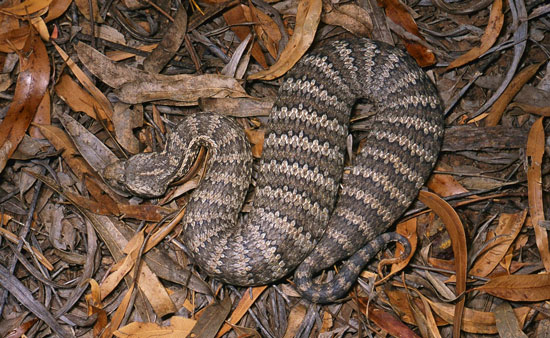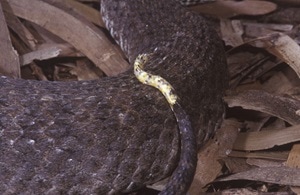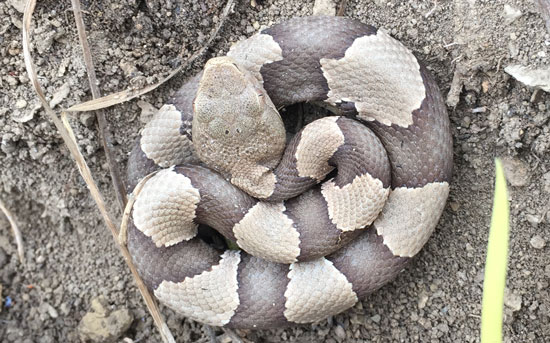|
In my upcoming novel, Profusion, one of the fascinating animals that makes an appearance is the Death Adder, a venomous snake that lives in eastern Australia and New Guinea (part of Profusion takes place in the rainforest of Papua, the Indonesian province that is the western half of New Guinea). The name "Death Adder" certainly implies that this creature is dangerous (which it is), but actually the name is derived from "Deaf Adder," the name given to the snake by early Australian settlers. They called it the deaf adder because, unlike many other snakes, these held their ground and did not slither away when approached by people. So people assumed they were deaf. It is important to note, though, that snakes in general do not actually "hear" the way we do. Instead, they sense vibration in the ground, and the death adder is no different from other snakes in that respect. Scientists do not agree on how many species of death adders exist. Depending on the source (or how you define a species), there are 4 to 14 species. Amazing Facts about Death Adders: Death Adders, like all snakes, are predators. But instead of going after their prey, they sit still, often hidden beneath the soil or leaves, and wait for prey to come to them. To help lure prey closer, they have a modified tip on their tail that they move around, making it look like a wriggling worm. This attracts birds, rodents, frogs, and lizards to take a closer look. Typically this is the last closer look they ever take at anything. There is a scene in Profusion in which a tree kangaroo (our good old friend, Mbaiso) encounters just such a thing. If you want to know what happens, you will have to read the book when it comes out this summer! Check out this cool video of "caudal luring" of a death adder: https://www.youtube.com/watch?v=WXtN9PER5UE Death adders can be deadly! They are among the most dangerous snakes, and they can inject up to 100 mg of a very undesirable neurotoxin (affects the central nervous system rather than just the tissue around the bite). And they strike amazingly fast. They can go from the strike position, hit their prey and inject venom, and back to the strike position in 0.15 seconds. They are the world record holders for strike speed! In Australia, death adders often kill and eat giant marine toads. There is good news and bad news regarding this. Since marine toads are not native to Australia, and in fact are considered damaging to the ecosystem, this is the good news. The bad news is that marine toads have toxic glands on their skin. Once the marine toad is swallowed, the toxin from these glands kills the death adder. Talk about a lose-lose situation! Death Adders look much like vipers (many venomous snakes are in the viper family, with short, fat bodies and triangular heads), but they aren't vipers at all. And they aren't adders either, in spite of their name. They are actually "Elapids" (more closely related to cobras and coral snakes). Speaking of vipers, when Trish and I were hiking the Flint Hills of Kansas a few weeks ago, we came across a copperhead (photo below). Copperheads are "pit vipers," which means they have heat-sensing pits on their faces that help them detect warm-blooded prey. Notice how similar the death adder is to the copperhead. This is a result of "convergent evolution," which is when animals (or plants) that are not closely related evolve similar characteristics because those characteristics best suit their habits and environment. So the death adder deserves a place in the J.A.H.O.F. (Jelly Animal Hall of Fame). Fun Fact: Jelly is a term used as early as the mid 1500s. It was used to describe someone who was excellent (but particularly if they had a high opinion of themselves). It may have come from the word jolly, but no one knows for sure. Basically, it means awesome. Photo Credits:
First death adder photo by Steve K Wilson. Death Adder caudal lure: Queensland Museum
0 Comments
Leave a Reply. |
Stan's Cogitations
Everyone needs a creative outlet. That's why I write. Archives
July 2024
|




 RSS Feed
RSS Feed